Story by Michael T. Lynch
Photos by Hugues Vanhoolandt unless otherwise noted
If you really want to do the Monterey Peninsula’s Automotive Car Week completely you have to arrive on the Friday before the weekend before the Pebble Beach Concours. The nine days include multiple car shows, auctions, panel discussions and book and memorabilia sales events. This year’s tally was 38 events that I would have been interested in, if I were younger. Let us take you to a few stops along the way.
If you have spare time during the week and have any interest in Italian machinery (and I know you do), you must make some time to see Robb Talbott’s Collection in the Motorcycle Museum in Carmel Valley Village, out where the sun shines much more than it does on the coast.
Above, the upstairs is primarily road and road racing bikes and, as you can see, the flavor is definitely Italian. However, who doesn’t love a BSA Gold Star Clubman. (Lynch photo)
Brandes Elitch has previously written of this Museum in the August 30, 2016 edition of VT, but the quality of this collection should be mentioned as often as possible.
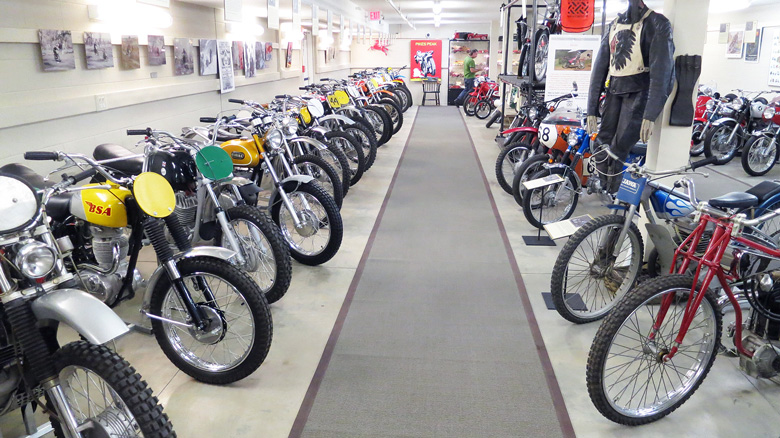
The downstairs has flat trackers, speedway bikes, motocross machines, desert sleds and anything else that ran on dirt. I hope I conveyed how any trip to the Monterey area is incomplete without viewing this jewel of motorcycle history. (Lynch photo)
Monterey Car Week
The congestion caused by Car Week events has resulted in at least one City Council person in every Peninsula City to call for the abolition of the week. The municipalities have brought part of the problem on themselves. Most have ordinances to protect the taxpayers by calling for events to pick up the cost of police overtime, cleanup, etc. This is understandable, but most cities did not enforce those ordinances so they could attract people to their towns. Now the events are being charged in some cases and we will see what effect this has on the events themselves, some of which are always marginal financially. Whatever happens, you can be sure bandings of the CAVE people (Citizens Against Virtually Everything) will continue to keep the abolitionist cause alive via letters to the editor, City Council comments, etc.
Two bright spots in the week, optically speaking, are the Carmel-by-the-Sea Concours on the Avenue on Tuesday and the Pebble Beach Tour d’Elegance on Thursday. The venue for both is the same, Ocean Avenue, the Main Street of Carmel. These two events are free, allowing the locals to see the Concours cars without paying the mid-three figure prices of the main events. They thus draw huge crowds, including many families. These events are somewhat of a payback to the local communities who suffer through the inconveniences of the week.
Robert Kauffman’s 1907 Renault Al 35/45 Vanderbilt Racer leads the field at the start of the Pebble Beach Tour d’Elegance. The Renault would go on to win the Open Wheel Race Cars Class at the Concours on Sunday. You will learn more about the three cars behind it in our story. (Credit:©Kimball Studios/Courtesy Pebble Beach Concours d’Elegance)
The Tour was first run in 1998, and it had enormous influence of the American Concours scene. Prior to that, Concours competition had come to the point where “trailer queens” ruled the roost. These were cars that were taken from show to show in closed trailers and driven rarely if at all. The Pebble Beach Concours organizers wanted to get the cars driven on the roads, the task they were originally designed for. There was some reluctance, but Pebble Beach cleverly put in the small print that if two cars were tied in points in the Concours, and only one had taken part in the Tour, then the Tour car would be declared the winner. The long term result has been that there were over 175 entrants in the Tour this year, exceeding 100% of the entrants, because some guests are invited. The cars are now driven as they were meant to be.
Jim Patterson’s Bugatti Type 57C Voll & Ruhrbeck Cabriolet heads North towards the Tour luncheon in Carmel. The German coachbuilder began in 1920. After producing military vehicles during WWII, the firm closed its doors in 1945. The waterfall grille is out of character as a Bugatti styling cue, but very effective. The judges agreed and the car won the European Classic Late Class.
Part of the Tour takes place on Highway One, the coastal road south of Carmel. Hugues Vanhoolandt. has captured the magnificent scenery as Raffi Najjarian’s Siata 208CS Corsa Bertone Spyder makes its way South. This car was raced in period by one of the Bertone family. One can almost hear the Siata’s little two-liter V-8 purring above the sound of the surf.
Seen on the Tour is Wayne Grafton’s Delahaye 135 MS Figioni & Falaschi Narval Cabriolet. It was first in the Postwar Grand Touring Class and was also awarded the French Cup. Narval refers to the probiscus of the car, named after a Narwhale.
At the lunch stop on the Pebble Beach Tour d’Elegance, the crowds are out to see the Tour cars parked on Ocean Avenue in Carmel. Many literally gasped when the saw the damage to Carol and David Seielstad’s Ferrari 166 Barchetta. The two had taken part in the Pebble Beach Motoring Classic, a 1500 mile tour from Kirkland, Washington to Pebble Beach. At the Timberline Lodge on Mount Hood, Oregon, David was trying to push the Barchetta into a parking space, when an unseen grade caused the car to get away from him and run into an unoccupied parked car. It turned out that it was a good thing the Barchetta hit the parked car. Just behind it was a 30 foot drop off with no guard rail. Carol and David continued on the Motoring Classics and also took part in the Tour d’Elegance. Carol and David are true enthusiasts and believe cars of this quality should be driven, so a little body damage didn’t deter them from their planned itinerary. (Lynch photo)
I consider myself a moderately early riser (6:30 AM), but those who proudly call themselves members of the Dawn Patrol at Pebble Beach begin appearing about 5, with some earlier. The cars will not arrive for over an hour. Their attraction is to see the cars being driven onto the field, and/or secure a spot to place their blanket in order to be as close as possible to watch the cars going across the ramp. This image perfectly portrays their madness. The car is Renaat Declerck’s Moretti 1200S Michelotti Spyder, a visitor from Belgium. Designed by Giovanni Michelotti, the car was shown on the Moretti stand at the 1955 Brussels Motor Show.
Carlo Abarth was a speed equipment manufacturer who also worked with FIAT to produce higher performance models. This car appeared at the 1960 Turin Auto Show. Designed by Pinin Farina, the car came to be called La Principessa (The Princess). Obviously built for record runs, it had an Abarth-modified, twin-camshaft, one-liter engine making over 90 horsepower. With this product of extensive wind tunnel development, Pinin Farina wanted to break long distance records in the FIA’s Class G (up to 1100 cc). The car was a complete success, setting records at 12 hours, 2,000 miles, 24 hours, 5,000 kilometers, 5,000 miles, 48 hours, 10,000 kilometers, and 72 hours, the latter at almost 119 miles per hour. It also won third in the preservation class at Pebble Beach this year.
Luigi Chinetti’s North American Racing Team was legendary, sometimes beating the factory Ferrari team. Over two weeks in 1965, the team won the 24 Hours of Le Mans (Masten Gregory/Jochen Rindt in a 250 LM) and the 12 Hours of Reims (Pedro Rodriguez/Jean Guichet in a 365 P2). It was fitting for an American team that the latter race was on the 4th of July. The two winners are shown on the lawn at Pebble Beach in a special Ferrari Class of Major Race Winners. The 250 LM is in the foreground. The gentleman standing behind the P car, talking to the two ladies, is Ed Gilbertson, former Chief Judge at Pebble Beach. (Lynch photo)
The Pebble Beach Concours is crawling with celebrities from the entertainment and automotive industries, not to mention former and current racing drivers. Seen here looking over Anne Brockington Lee’s 1949 Le Mans winning Ferrari 166 Barchetta are Jacky Ickx (right) and Derek Bell. Between them, they have 11 Le Mans victories (Ickx 6, Bell 5). Three of these came driving together.
It’s not Italian or French, but it was fast in its day. There was a class this year for California Specials that raced on the old Pebble Beach Course. This is a Tatum, built by Chuck Tatum over the winter of 1952/3. He used Ford suspension and Lincoln drum brakes mounted on a tubular frame he fabricated. The engine was a GMC truck six-cylinder with Wayne speed equipment. The body was built by well-known San Francisco body man, Jack Hagemann. The car won at Stockton in 1953 and Madera 1954, and was taken to Bonneville where it ran 157 mph. It also won the 1947-1955 Sports Racing and GT race at Laguna Seca the day before this year’s Pebble Beach Concours. It was driven by local boy, Dave Zurlinden of Monterey, for owner, Rob Manson of Carmel Valley.
Working with sometime co-author, Robert T. Devlin, we were privileged to write about the California Specials in the Pebble Beach Program. Robert had a big weekend, winning the Lorin Tryon Trophy, the only Pebble Beach Award given to a person, rather than a car. Bob has meticulously recorded the history of both the races and the Concours at Pebble Beach. He has written two books on the subject, Pebble Beach: A Matter of Style: Racing Through the Pines 1950-1956: Concours d’Elegance 1950-1979; a Complete History, and Pebble Beach Concours D’elegance: The Art of the Poster, the latter with co-author, Kandace Hawkinson. Bob’s honor was well-deserved.
This lovely Bugatti, while not as swoopy as most, is a Type 57. The lack of running boards, pinched body accent line and Weymann top all blend to make a cohesive design. The body was attributed to Gangloff for years, but a recent restoration uncovered information that proved otherwise. It turned out that the body was built by Carrosserie Binder, located in Paris. Binder was descended from horse-drawn coachbuilders dating to 1820. When it came to automobiles, the atelier usually bodied luxury sedans and even did the styling for one of the six Bugatti Royales. This car is proof that they knew way around sporting machinery as well. It was brought by Rick Grant.
As the Monty Python gang used to say, “And now for something completely different.” After World War II, Bugatti tried to restart auto production with the Type 101, which was really just an update of the prewar Type 57. Only a half dozen were built. The attempt was a failure, and the last chassis was finally sold to Virgil Exner after he had been fired by Chrysler in a management dispute. He then drew up designs to revive classic marques like Stutz, Duesenberg, Mercer and Bugatti. All were built as full size cars. The Bugatti revival was based on the last Type 101 chassis built. Exner had worked with Ghia on several Chrysler concept cars and the 101 was sent to them. The chassis was shortened by 18 inches and the finished design was presented at the 1965 Turin Auto Show, which supposedly resulted in 50 orders. Financial problems prevented any further versions from being built. (Lynch photo)
Lee Herrington’s 410 Superamerica Pinin Farina Coupe won the Ferrari One-Off Speciale Class. Both the colors are slightly off, but the judges know best. Perhaps it didn’t bother them because I’m not sure the second place car was the original color either. This car was first owned by Jan de Vroom, one of the original founders of the North American Racing Team. Before Herrington, it was owned for many years by Dean Martin’s Producer, Greg Garrison. He drove it up to Pebble Beach each year from Southern California, and it has been on the field before. (Lynch photo)
The coachbuilder Alfredo Vignale was known for the details in his designs. The interior of Peter Kalikow’s Ferrari 212 Export Vignale is a perfect example. The exquisite door pulls are accented with stylized body builder accents above. A grab bar is provided for the passenger and the instruments approach the colors of the dash and body color. Sometimes it as much fun looking at the inside as the outside of the cars on the field.The details were appreciated because the car won the Ferrari GT Class. (Lynch photo)
The late Robert M. Lee was a highly discerning collector. He assembled some of the most significant Ferraris, including these three similar Ferrari Boano designs, the only ones of this type built on Ferrari chassis. The car at the rear, a 250 GT Boano Cabriolet, was seen by Mr. Lee on the stand and the New York Auto Show in 1956 and he arranged to buy it from Luigi Chinetti, the importer. It had previously been shown at Geneva and Turin. He acquired the other two cars, a coupe and a cabriolet, both built on 410 Superamerica Chassis, in 1987. The cars were entered by Anne Brockington Lee.
The rear view of the Lee Collection Boano Ferraris reveals the idiosyncratic styling cues that make the cars so interesting. The way the upturned bumpers meet the widened body is an eye catcher. As you can see, there were split rear window designs long before the 1963 Chevrolet Corvette. The 250 GT Cabriolet on the left won third place in the Ferrari One-Off Speciales Class. (Lynch photo)
To celebrate the 70th Anniversary of Ferrari, Pebble Beach had the following classes for Ferraris; Ferrari Grand Touring; Ferrari Competition; Ferrari Major Race Winners and Ferrari One-Off Speciales. This resulted in over 40 Ferraris on the field. The Golomb Family Trust brought these two for the Speciales Class. Closest to the camera is the 375 Plus Pinin Farina Cabriolet Speciale, but for King Leopold of Belgium. The background car is a 375 Mille Miglia Pinin Farina Coupe Speciale. It was shown at the 1954 Paris Salon. Legend has it that it was to be a gift to Ingrid Bergman from movie director, Roberto Rossellini. Her biography belies this since she remarks at length about how she disliked the car and his other powerful sports cars. It is this observer’s opinion that this car will one day win the Pebble Beach Concours, although it may not be in my lifetime. In the meantime, the King Leopold car took second in the One-Off Speciales Class.
Andreas Mohringer’s Ferrari 335 Sport Scaglietti Spyder won the Ferrari Competition Class. The green ribbon indicates that the car took part in the Tour d’Elegance. These brutal four-liter, four-camshaft cars won the 1957 Sports Car World Championship. World Grand Prix Champion Phil Hill often remarked that these were his favorite Ferrari sports racers. After the 1957 season, the rules were changed and only three liter cars were allowed. The four remaining cars were sold into the states by Ferrari importer, Luigi Chinetti. This was the last one built and was delivered to Alan Connell in 1959. He used it to win the Sports Car Club of America National event at Daytona that year, the season finale. Alan is no longer with us, but Anette Connell was extremely helpful by sharing the family archive with Paul Russell who did the spot-on restoration. Her material also helped me with a piece on the car that is in Cavallino Magazine #220. She was present on the field at Pebble Beach. (Lynch photo)
Someone’s shutter didn’t open properly, but Henri Chambon’s Maserati 300S Frantuzzi Spyder was still captured. The livery is that of legendary entrant, Tony Parravano, who almost simultaneously got into big tax trouble with the IRS and then disappeared, never to be seen again. The car was driven to a win by Masten Gregory at Palm Springs in December 1955, a contest that saw the lead change many times as Masten was challenged by Ernie McAfee in a Ferrari 750 Monza. It was also driven by Indianapolis winner Jimmy Bryan, in an early professional race at Willow Springs the following March. Because the SCCA and California Sports Car Club had strictly amateur rules, Parravano’s entrant’s license was lifted by both clubs because he entered a car in a professional event. At Pebble Beach, it took home the Vitesse-Elegance Trophy. (Lynch photo)
Officine Meccaniche was founded in 1889 in Milan. It built locomotives and railroad rolling stock. The company entered the automobile business in 1917, with the cars being called OMs. The company made four and six-cylinder sports cars and were successful from a sales point of view. They also built an exceptional racing record, finishing first and second in the two liter class at Le Mans in 1925/6, and winning the Index of Performance in the second year. Their greatest victory was in the first (1927) Mille Miglia with a Model 6-65. Michael Haentjes brought his 1930 OM Tipo 6-65 SS Mille Miglia Works Race Car from Germany. He was rewarded with a third in the European Classic Sport Class. (Lynch photo)
One thing about the Pebble Beach Concours that continues to amaze, is how the organizers can create classes for the rarest and most exotic cars and they come out of the woodwork. Isotta Fraschini started production near the beginning of the 20th Century and by the 1920 had celebrity clientele on both sides of the Atlantic despite being frightfully expensive. In America, many early film starts drove them. Pebble Beach organized three classes for Isotta Fraschini this year. This grouping shows the first car built, long on exhibit at the Ford Museum and now with the Lopresto Collection in Milan. Like many auto manufacturers, Isotta did not weather the depression well, but tried to make a comeback after World War II. The new model was the Monterosa. It had a V-8 engine designed by Aurelio Lampredi, later Chief Engineer at Ferrari, where his designs won the 1952 and 1953 World Championships for team driver Alberto Ascari. The coupe shown has coachwork by Touring and the blue Cabriolet was done by Boneschi. Fewer than six were built before the company closed its doors in 1949.
Here’s another view of the Monterosa Cabriolet. The name comes from Via Monte Rosa in Milan, address of the Isotta Fraschini factory. With a little more chrome, this could be mistaken for a 1950s American Convertible. The car came second in the Postwar Grand Touring Class. (Lynch photo)
At the end of the day, it was a battle of two brothers. This is Gwen and John McCaw’s Ferrari 315 Sport Scaglietti Spyder, which was one of the candidates for Best of Show It won the Ferrari Major Race Winner Class. It’s greatest victory was Piero Taruffi’s 1957 Mille Miglia win, the last year of that open road classic. It then came to America where Phil Hill won the Road America 500 at Elkhart Lake, the second most important road race in the U.S. after Sebring. (Lynch photo)
The judges picked Bruce McCaw’s Mercedes Benz S Barker Tourer as this year’s Best of Show, as well as the Jules Heumann Most Elegant Open Car Award and first in the Prewar Mercedes class. It is shown on the Pebble Beach Tour d’Elegance. There must be something in the genes, as Bruce and John have a third brother, Craig, who is also a collector. Had John’s Ferrari won, it would have been the first time a race car had taken Best of Show since Dr. Milton Roth’s Bugatti Type 37 Grand Prix won in 1956. There has only been one other race car winner since the event’s inception. That was Sterling Edwards’ R-26 Special in 1950, the first Pebble Beach Concours. Edwards was one of the organizers of the Pebble Beach Road Races, which began the same year. (Credit: ©Kimball Studios/Courtesy Pebble Beach Concours d’Elegance)
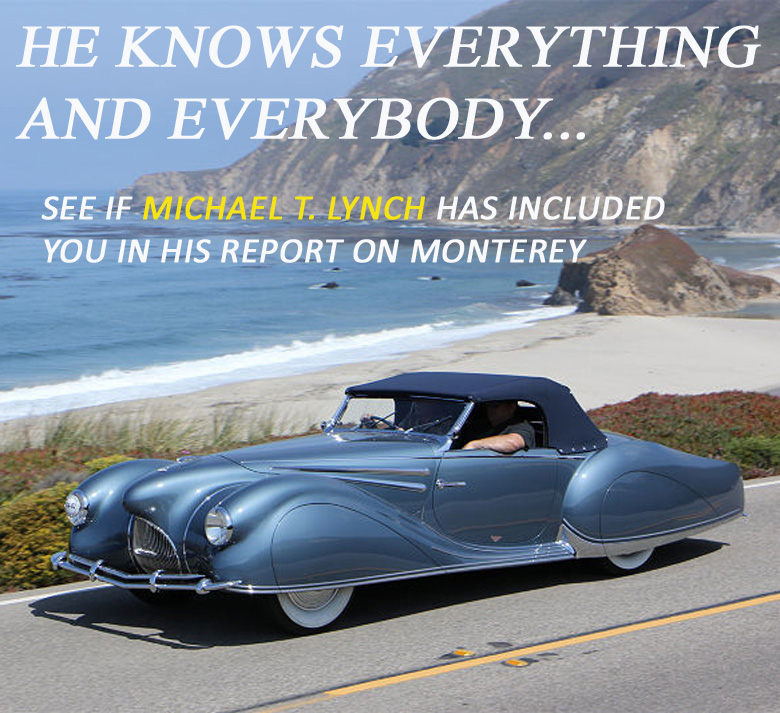
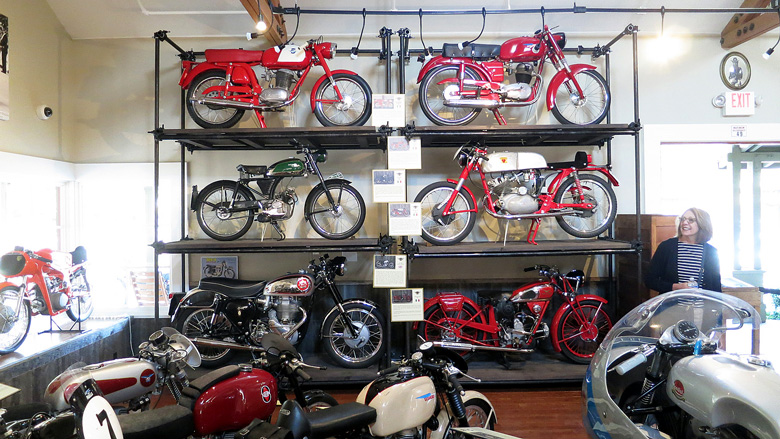
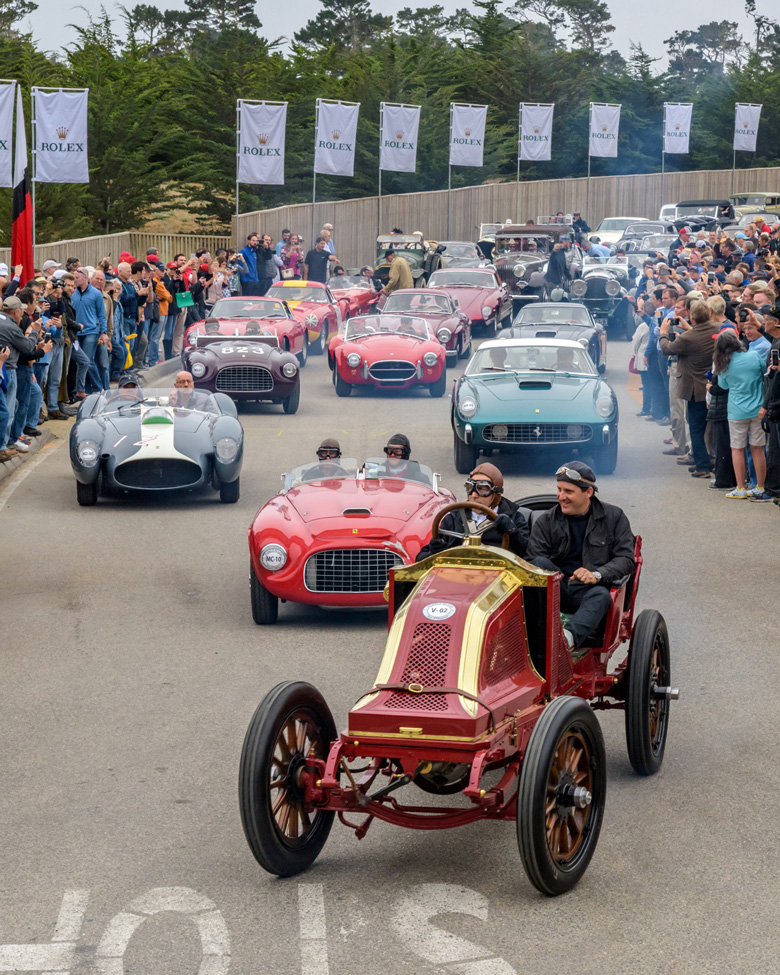
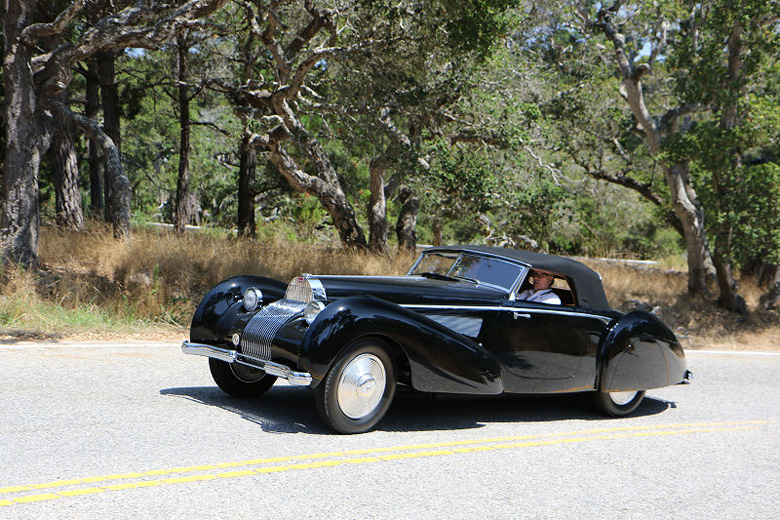
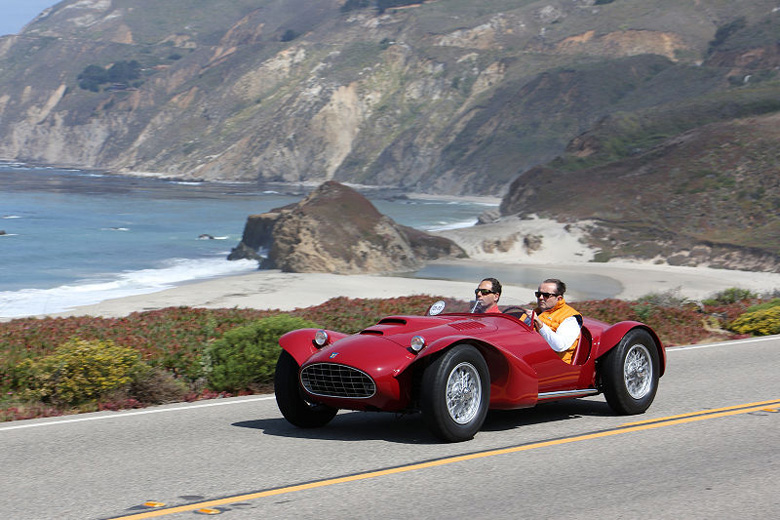
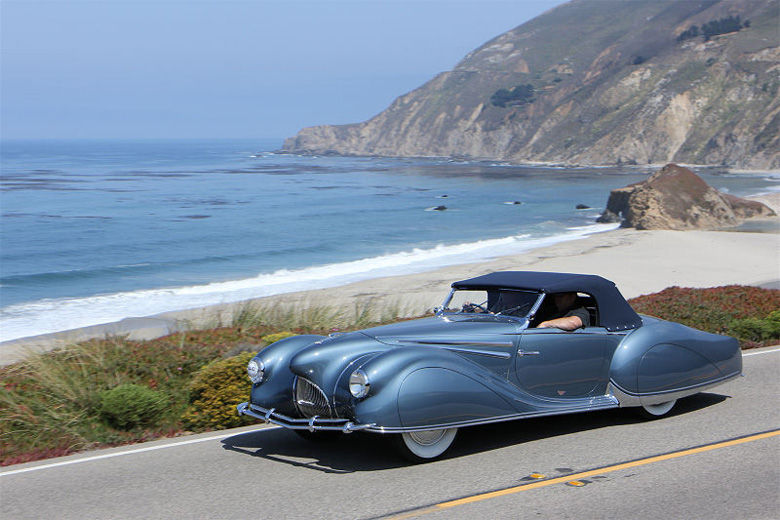

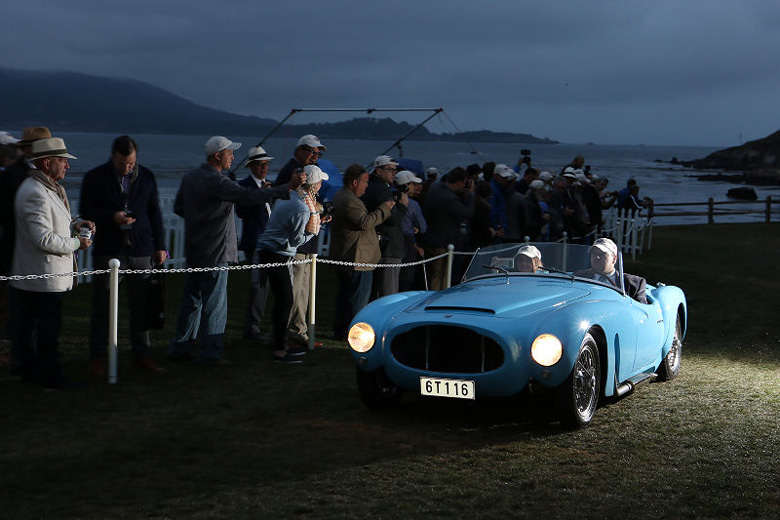
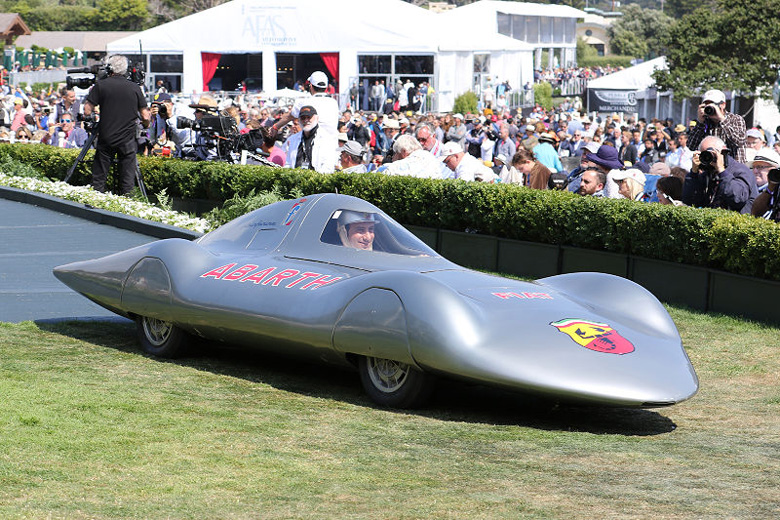
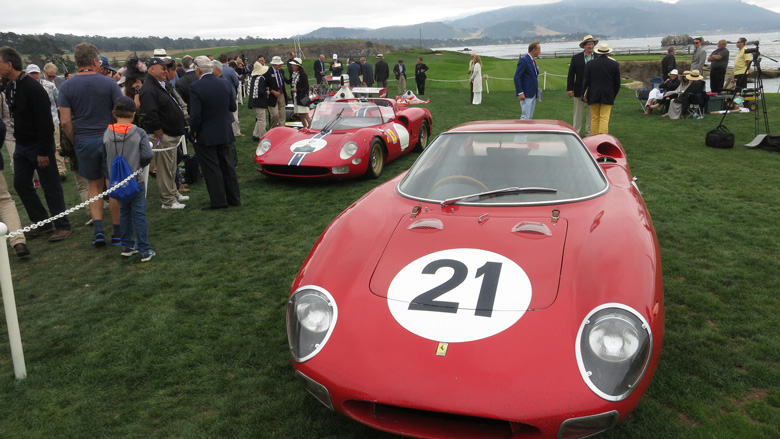
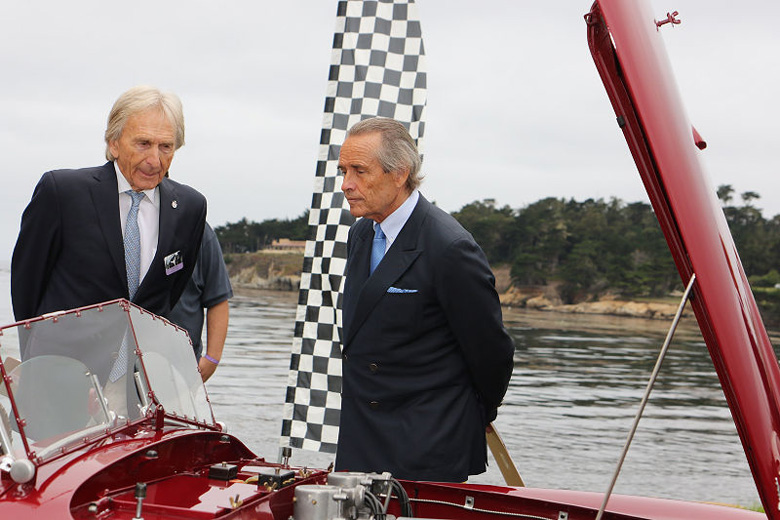
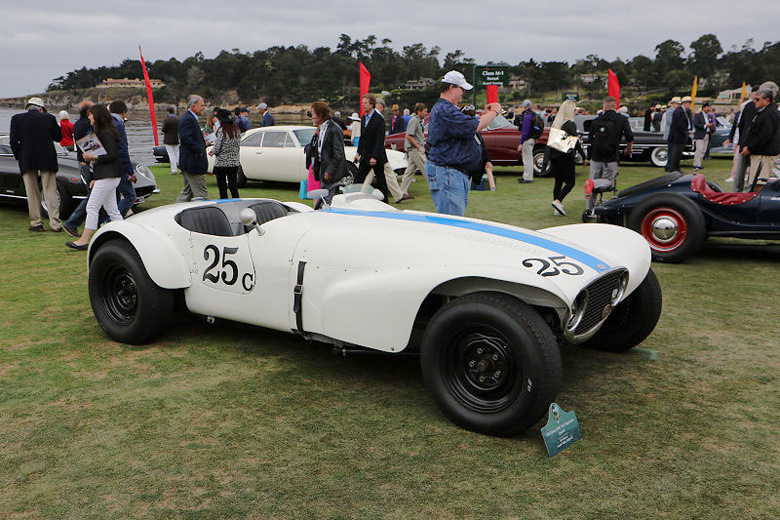
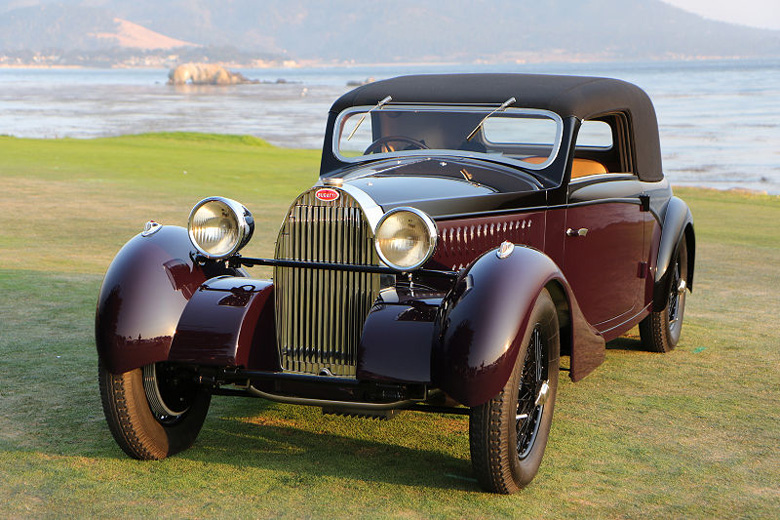
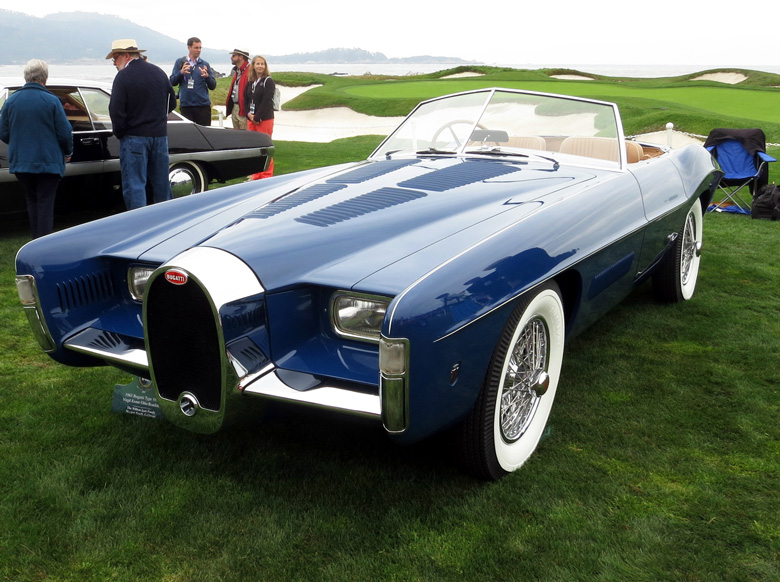

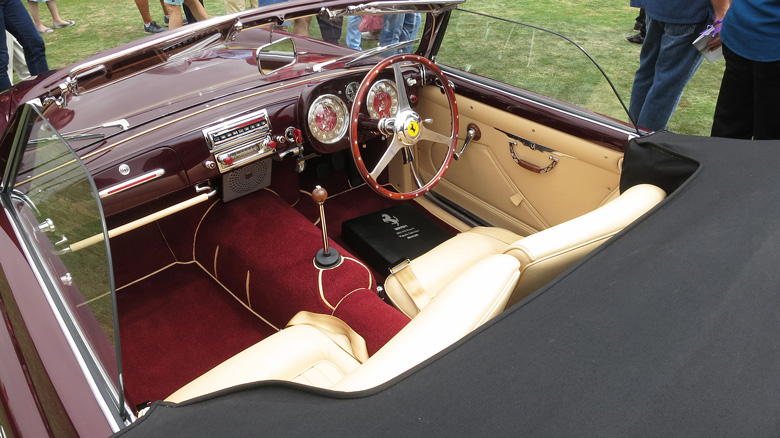
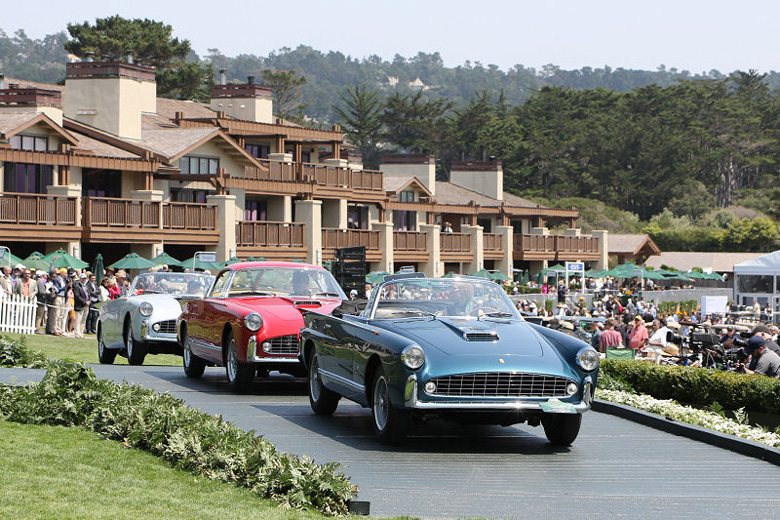
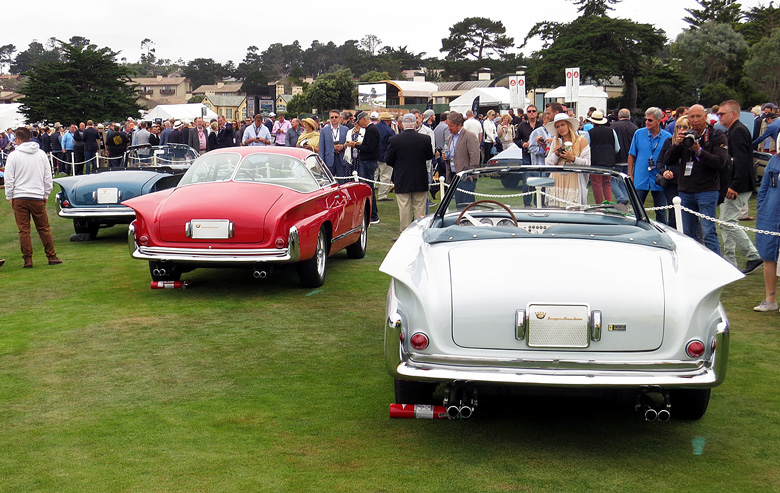
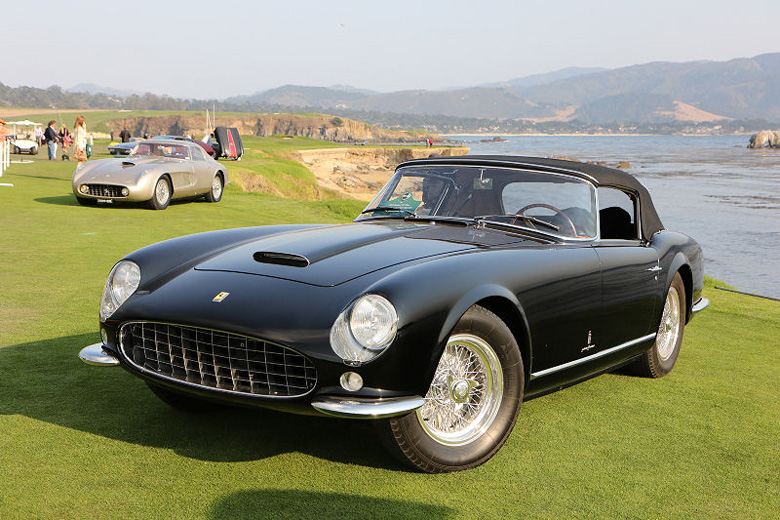

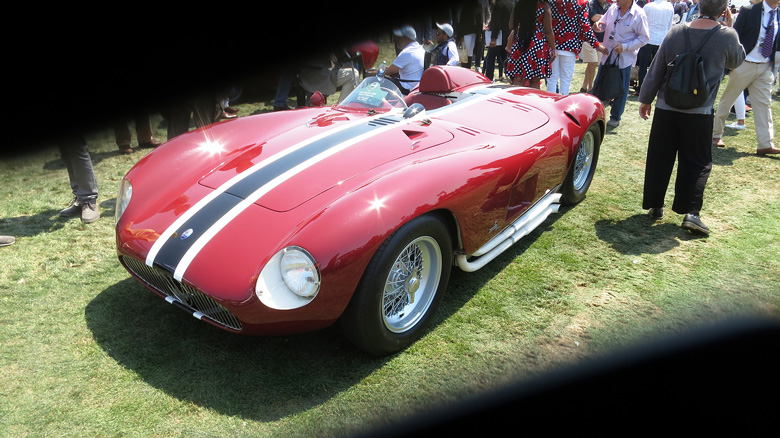
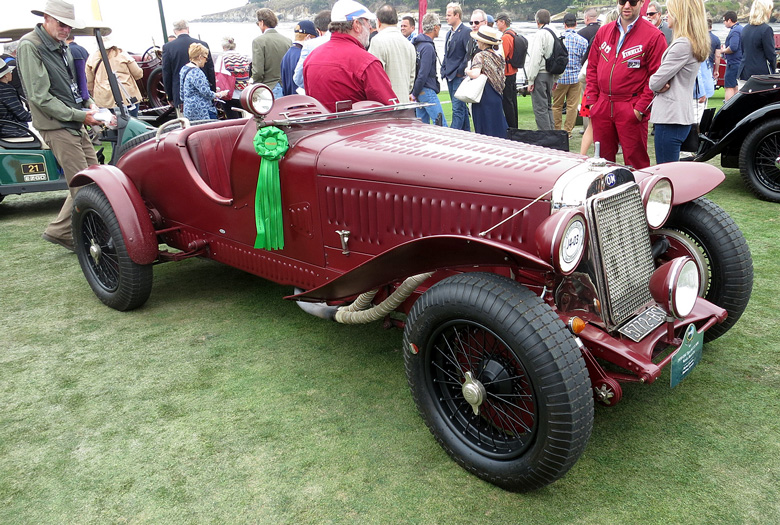
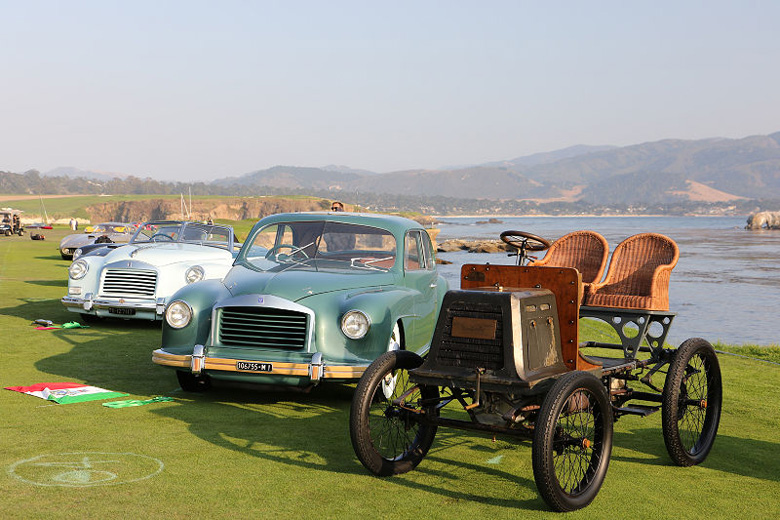
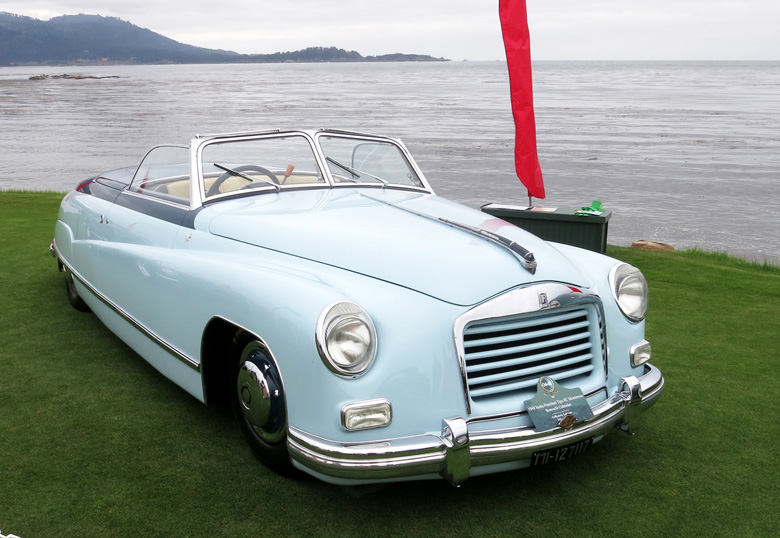
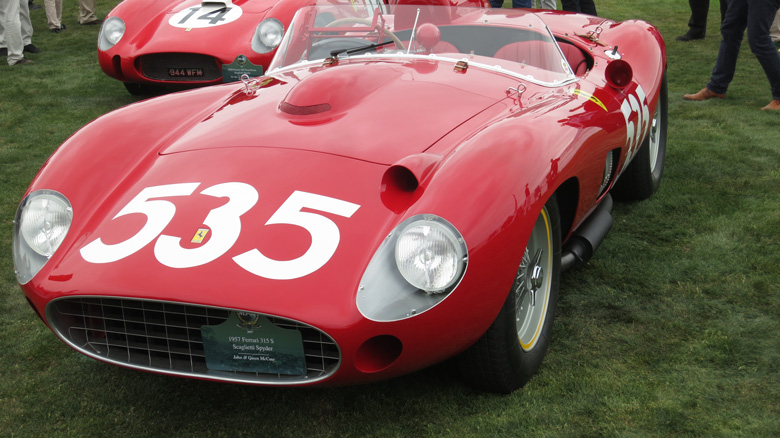
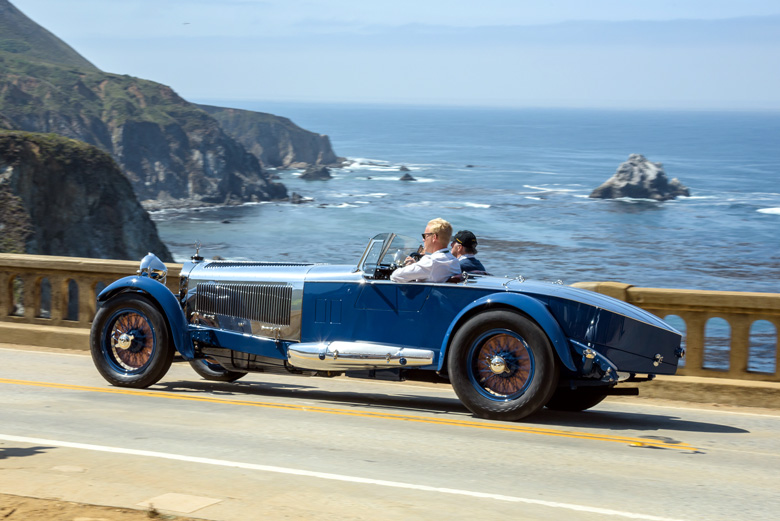
Good work chief.
Good to see Alan Connell’s 335S back in its original color, after many years clad in red.
However, Alan did not acquire the car until 1959, the year he won the SCCA National at Daytona.
Thank you for an insightful, glorious report.
Nice job Michael … looking forward to your book!
That elegant Ferrari 4.9 coupe of Jan de Vroom caused quite a stir in the paddock
at the 1957 German Grand Prix, After such an exciting day, we finally drove to
nearby village for dinner. Jan and friend David Cunningham, Mercedes 220 with
race organizer/interpeter, then Phil Hill and myself in his black Volkswagen sedan.
It was an odd mix roaring thru a valley to Cologne and then on to Sweden for next event, and shootout in 6 hour Enduro for Ferrari vs Maserati.
Seemed like throttle on Phil’s VW was more like toggle switch to keep up !
Jim sitz
Parravano Maserati brings back good memories.
Palm Springs in rain (!) was some battle–sure took Masten by surprise
since last time he saw Ernie he was just selling Ferrari, not driving and
race ended in darkness.
Days later the 300 S on its way to the Bahamas for speed week where
Gregory shined behind Phil Hill and de Portago. Just a month later Masten
used the car to win the final Torrey Pines race in California and home again.
That was some Golden Period in local So Cal Racing.
Jim Sitz
Excellent. Thanks so much !
Congratulations. Best review and photography to date.
Roy Lonberger
Super article! Loved the insight into the glorious cars!
Only one fault, Mt. Hood is in Oregon, not Washington.
Hi Michael,
Your report helps salve the pain of not being THERE. Monterey Holy Week is overwhelming And you captured the essence — Thank You,
Sam Smith
Don’t get me wrong, the Tatum is one of my favorite cars, but saying it won Stockton and Madera is a bit of a stretch. It won the novice races at those 2 events.
Another wonderful report from the man who was there in the day and saw it all. You continue to amaze us with your knowledge and memory of all things great.
Superb report, as always! Thanks for highlighting some of my favorite cars of the Pebble Beach show, and for telling me a few things I hadn’t known about them.
This comment is posted for Gary Krings by the Editor…
Michael has once again taken his inimitable approach that takes coverage for Concours week to a standard that he alone sets—amazing!
Having gone to 32 of them, I am always blown away at how he covers what I witnessed and, more importantly– what I didn’t– to find out the nuances in a clear, concise style that only he can provide!
He is a treasure!
Best wishes,
Gary Krings
I have a photograph of one of these (were there several?) at Lockbourne SAC base Columbus Ohio, August 1953. I don’t know if I have sent you a scan of it yet. And by the way, I did come across the name of the photographer, Bob White, Redlands, CA